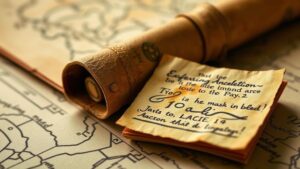Exploring Historical Trails to Find Pioneer Artifacts and Gold Deposits
Exploring Historical Trails to Find Pioneer Artifacts and Gold Deposits
The pursuit of pioneer artifacts and gold deposits has long fascinated historians, archaeologists, and treasure hunters alike. The historical trails that marked the movement of settlers during the westward expansion of the United States have become focal points for uncovering evidence of the past. This article delves into the significance of exploring these trails, examining specific locations, the types of artifacts typically uncovered, and the ongoing allure of gold deposits.
The Historical Context of Westward Expansion
Between 1840 and 1860, millions of Americans migrated westward in search of land, opportunity, and prosperity. California Gold Rush of 1849 is a pivotal event that catalyzed this movement. Early settlers traveled through notable routes such as the Oregon Trail, California Trail, and Santa Fe Trail, each brimming with historical significance.
For example, the Oregon Trail spanned approximately 2,170 miles from Missouri to Oregon, serving as a key thoroughfare for pioneers. Historical records indicate that by 1860, about 400,000 settlers had traversed this trail, leaving behind myriad artifacts and stories.
Pioneer Artifacts: Types and Significance
Pioneer artifacts reflect the daily lives and struggles of those who traveled these historical trails. Commonly found items include:
- Cooking utensils, such as iron pots and pans
- Personal items, like buttons and tools
- Horse gear, including saddles and bridles
- Coins and currency, which provide insight into economic conditions
Each artifact serves as a tangible connection to the past, providing clues about the social and economic conditions of the time. For example, a collection of coins discovered along the Oregon Trail may reveal not only the commerce of the era but also the types of transactions settlers engaged in.
Gold Deposits: Locations and Techniques
The search for gold continues to draw interest due to the potential financial rewards. Significant gold deposits were discovered in several areas during the 19th century, notably:
- The Sierra Nevada in California, where the most prolific gold strikes occurred in areas such as Sutters Mill (1848).
- The Black Hills of South Dakota, noted for the discovery of gold in 1874.
- The Cripple Creek District in Colorado, which began producing gold in the early 1890s.
Modern techniques for finding gold in these historical regions have evolved beyond simple prospecting. Geophysical surveys, metal detecting, and panning are amongst the most widely used methods today. According to the United States Geological Survey, advances in technology allow for more precise identification of gold-laden areas, sometimes revealing deposits previously thought to be exhausted.
The Role of Preservation and Ethics
As interest in exploring historical trails for artifacts and gold deposits increases, so do the ethical considerations surrounding such pursuits. Preservation of historical sites is paramount. Organizations like the National Park Service emphasize responsible archaeology, encouraging individuals to obtain the necessary permits and adhere to the guidelines in place to protect cultural heritage.
Case Studies: Successful Discoveries
Numerous case studies exemplify the successful exploration of these trails. In 2005, a group of amateur metal detectors found a cache of 19th-century gold coins near the abandoned town of Bodie, California. Further analysis revealed that these coins dated back to the late 1800s, offering a rare glimpse into the wealth amassed during the Gold Rush era.
Similarly, the discovery of remnants from the 1849 migration along the Oregon Trail in Wyoming offered rich insights into the hardships faced by pioneers. Items unearthed included broken wagon parts and personal effects, helping historians piece together the migratory patterns and daily life of early settlers.
Conclusion: Actionable Takeaways for Aspiring Explorers
For those interested in exploring historical trails in search of pioneer artifacts and gold deposits, there are several actionable steps to consider:
- Conduct thorough research on historical trails and their significance.
- Use modern technology, such as metal detectors and geospatial mapping tools, to enhance exploration efforts.
- Understand and follow ethical guidelines for artifact recovery to preserve history.
- Engage with local historical societies for insights and potential permissions.
Exploring these historical trails not only offers the possibility of uncovering valuable artifacts and gold but also provides an opportunity to connect with the rich tapestry of American history. The pursuit is both a personal and collective journey, yielding stories that reverberate through time.
